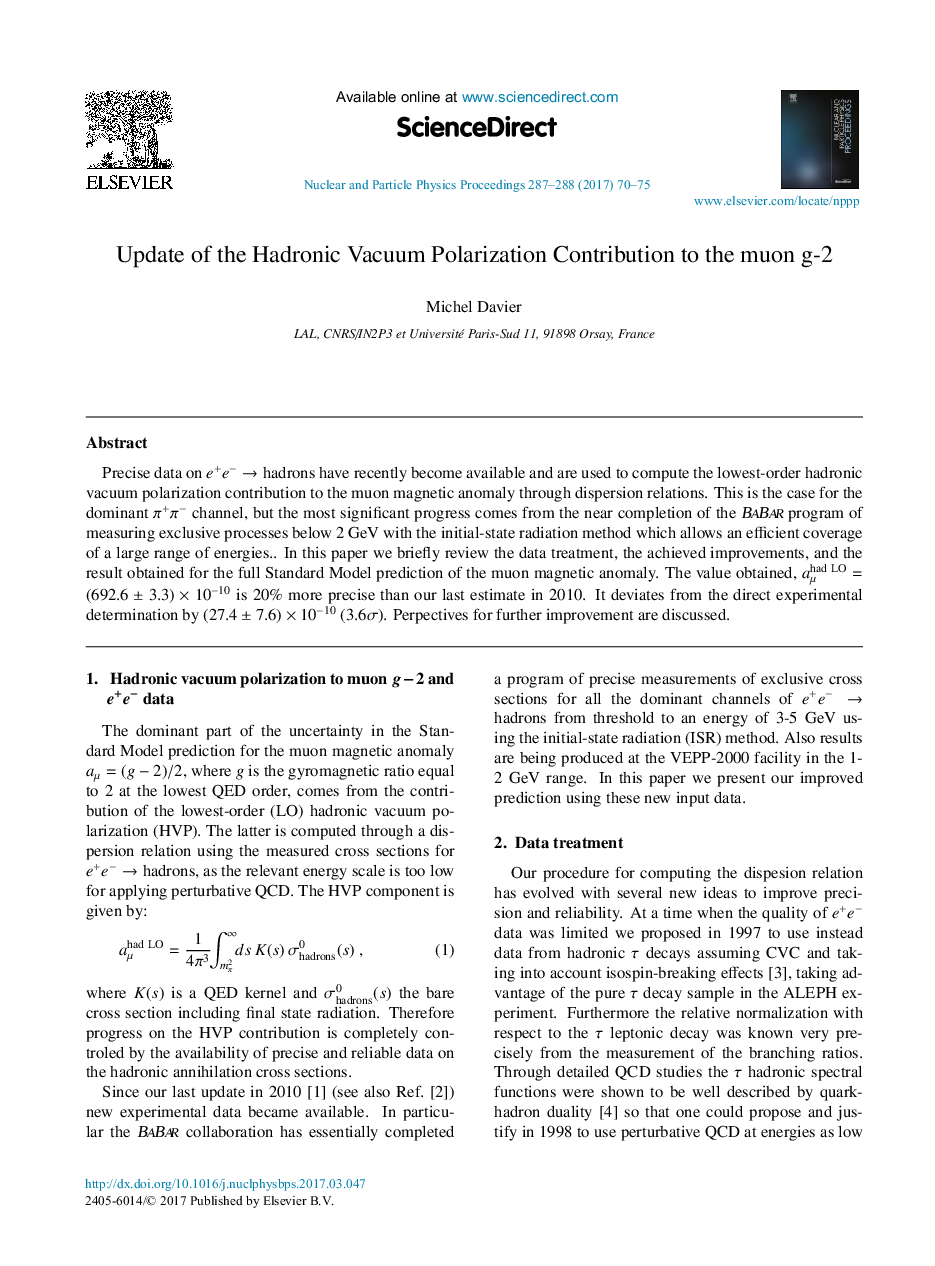| Article ID | Journal | Published Year | Pages | File Type |
|---|---|---|---|---|
| 5493595 | Nuclear and Particle Physics Proceedings | 2017 | 6 Pages |
Abstract
Precise data on e+eââ hadrons have recently become available and are used to compute the lowest-order hadronic vacuum polarization contribution to the muon magnetic anomaly through dispersion relations. This is the case for the dominant Ï+Ïâ channel, but the most significant progress comes from the near completion of the BaBar program of measuring exclusive processes below 2 GeV with the initial-state radiation method which allows an efficient coverage of a large range of energies.. In this paper we briefly review the data treatment, the achieved improvements, and the result obtained for the full Standard Model prediction of the muon magnetic anomaly. The value obtained, aμhadLO=(692.6±3.3)Ã10â10 is 20% more precise than our last estimate in 2010. It deviates from the direct experimental determination by (27.4±7.6)Ã10â10(3.6Ï). Perpectives for further improvement are discussed.
Related Topics
Physical Sciences and Engineering
Physics and Astronomy
Nuclear and High Energy Physics
Authors
Michel Davier,
